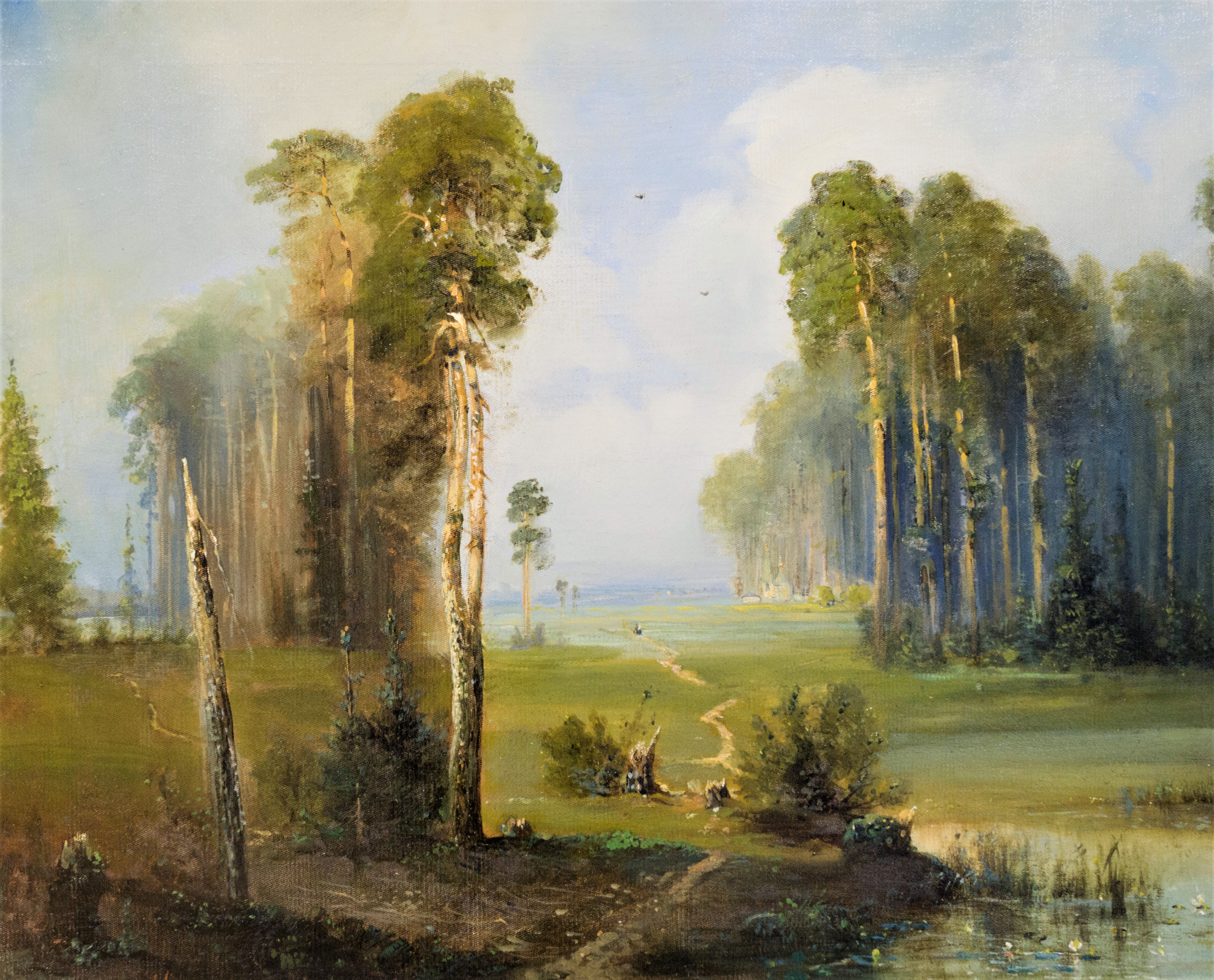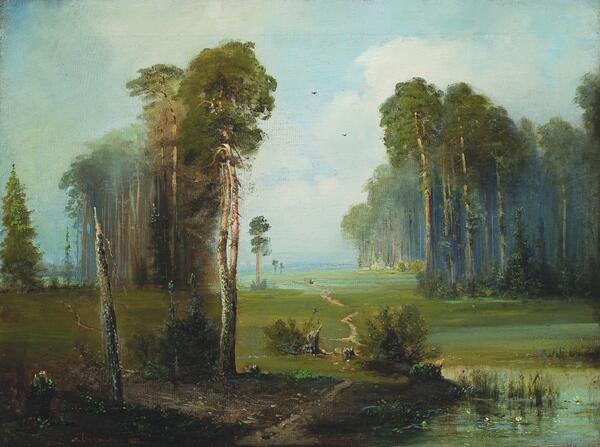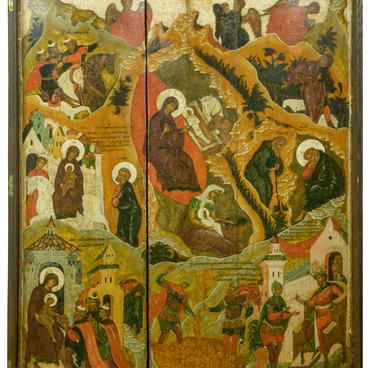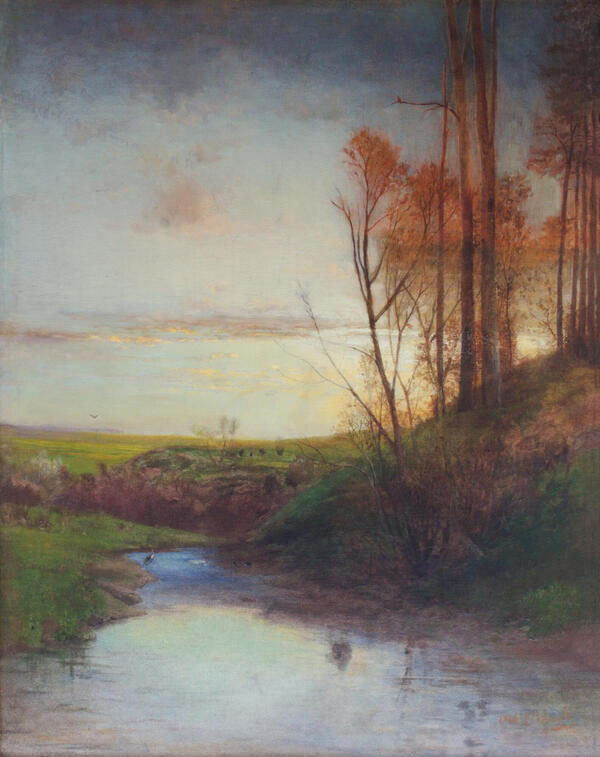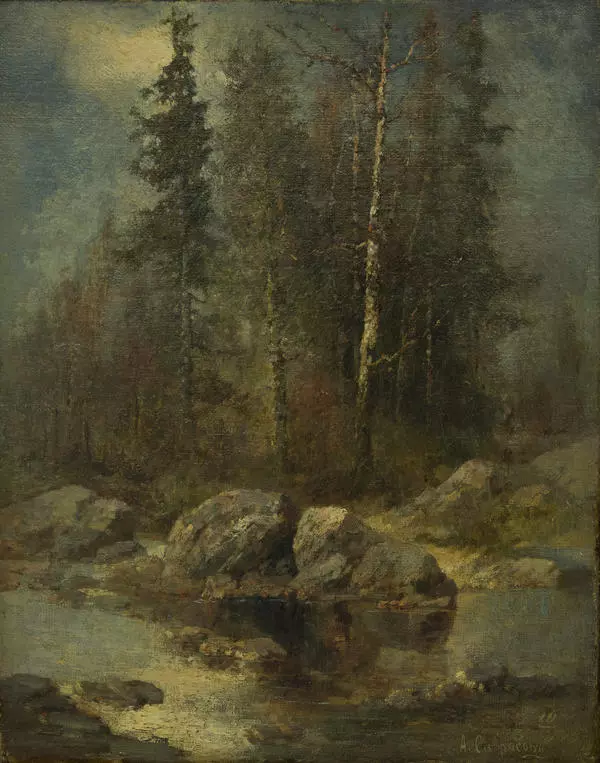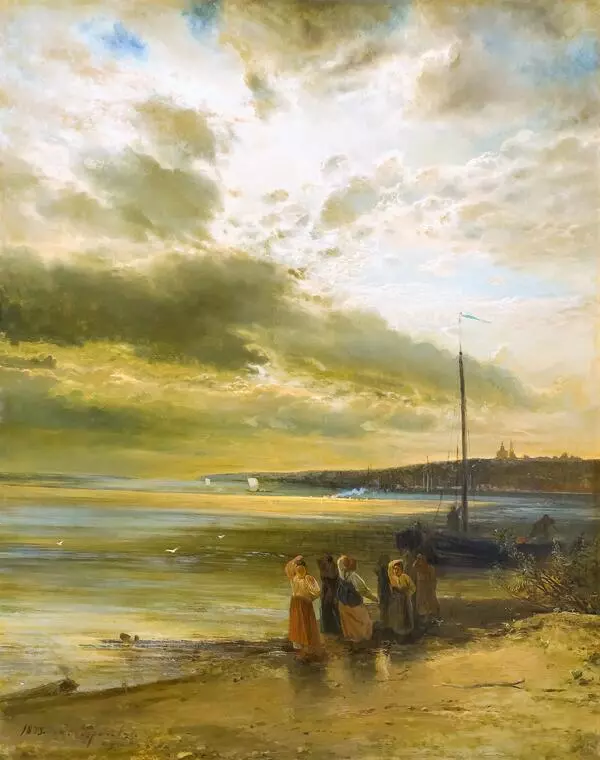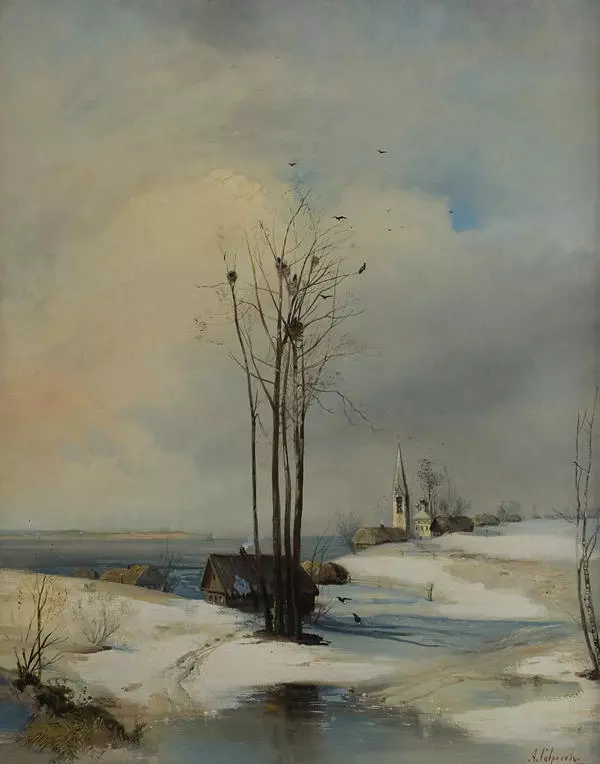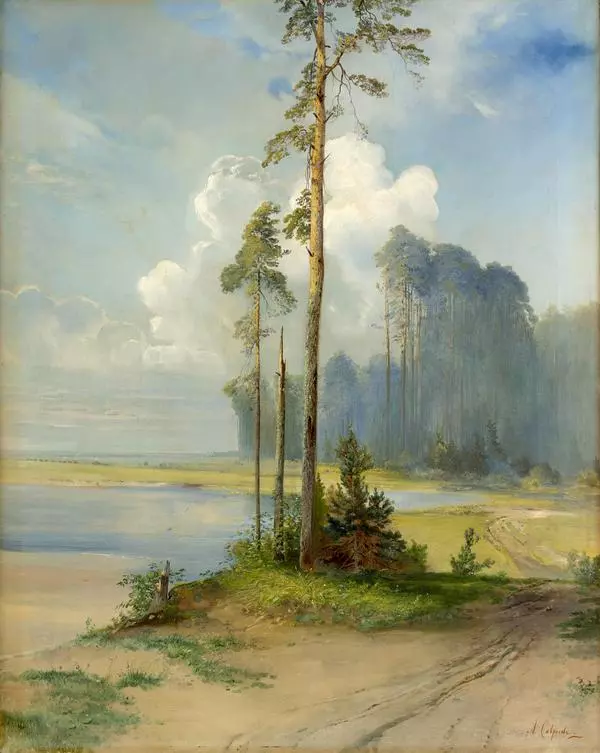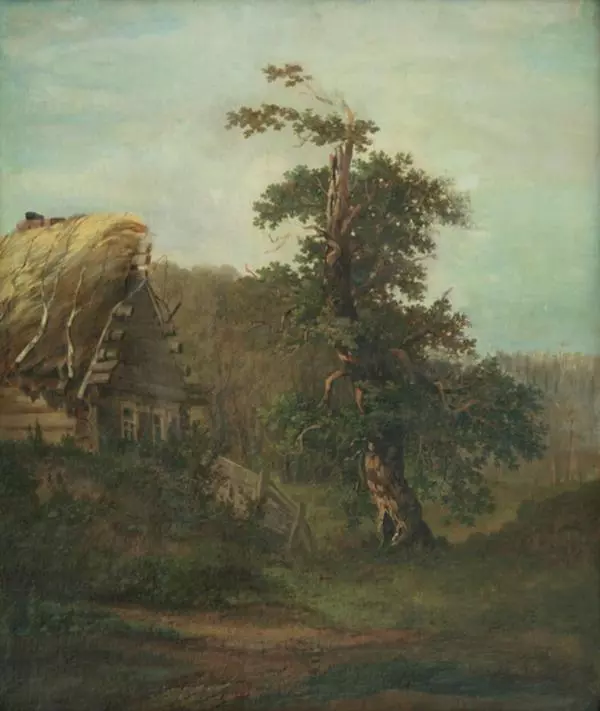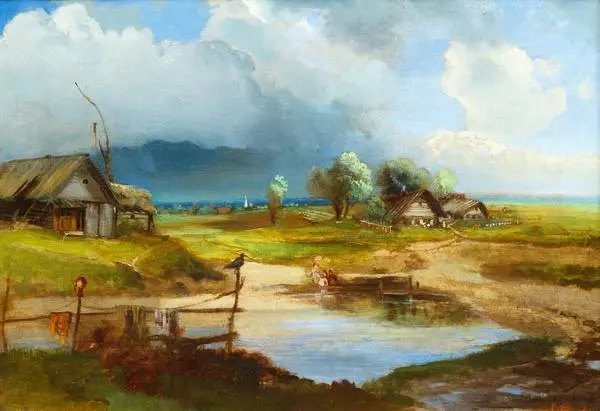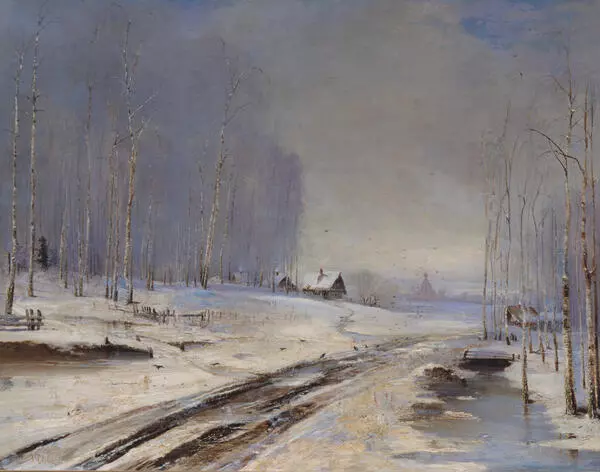At the time of Alexey Savrasov Sokolniki was one of the most poetic corners in the vicinity of Moscow. The artist enjoyed working there and painted the landscape of the park several times. In 1870 he received the first prize of the Moscow Society of Art Lovers for the painting ‘Losiny Island in Sokolniki’.
Savrasov considered spiritual communication with nature to be the main task of his work. And the simpler the landscape looked, the better it was from the artist’s point of view. Isaac Levitan, Savrasov’s favorite student, made a particularly discerning remark about this quality of his teacher, ‘He sought to find in the simplest and most ordinary those intimate, deeply touching, often poignant features that are so strongly felt in our native landscape and affect the soul so irresistibly.’ In his landscape paintings, Savrasov was the first artist to render that variety of mood that characterizes the Russian school. There even appeared a set expression — ‘Savrasov’s sense of nature’.
“Sokolniki” refers to the late period of the artist’s career, when elegy and sadness became more conspicuous in his works. The closed composition and the one-way perspective into the background make the landscape seem especially moving. The soft light and the faint haze blur the contours of trees and the horizon, enhancing the emotional impact of the painting.
The landscape painter Alexey Savrasov was born into the family of a poor merchant. At the age of 19, he was already known among the intelligentsia in St. Petersburg. At 24, Savrasov received the title of academician for his canvas ‘View in the Vicinity of Oranienbaum’.
Savrasov’s whole life was connected with Moscow and the Moscow School, where he taught a landscape painting class from 1857 to 1882. He brought up a whole generation of eminent Russian artists. Savrasov was not just a teacher for his students: he was loving and compassionate, helpful and demanding. The support that he offered to Isaac Levitan, his poorest and most talented student, was especially wholehearted. Savrasov taught to work more en plein air, he often went outdoors with his class and painted from nature together with his students. His student Konstantin Korovin reminisced about Savrasov describing the latter as a man of “very special patience”, a man who was kind, intelligent, who never argued or got angry.
The artist traveled abroad to England, France, Switzerland and Germany, admired the landscapes of these countries, but came to an invariable conclusion that Russian nature was better and more sincere.
Savrasov considered spiritual communication with nature to be the main task of his work. And the simpler the landscape looked, the better it was from the artist’s point of view. Isaac Levitan, Savrasov’s favorite student, made a particularly discerning remark about this quality of his teacher, ‘He sought to find in the simplest and most ordinary those intimate, deeply touching, often poignant features that are so strongly felt in our native landscape and affect the soul so irresistibly.’ In his landscape paintings, Savrasov was the first artist to render that variety of mood that characterizes the Russian school. There even appeared a set expression — ‘Savrasov’s sense of nature’.
“Sokolniki” refers to the late period of the artist’s career, when elegy and sadness became more conspicuous in his works. The closed composition and the one-way perspective into the background make the landscape seem especially moving. The soft light and the faint haze blur the contours of trees and the horizon, enhancing the emotional impact of the painting.
The landscape painter Alexey Savrasov was born into the family of a poor merchant. At the age of 19, he was already known among the intelligentsia in St. Petersburg. At 24, Savrasov received the title of academician for his canvas ‘View in the Vicinity of Oranienbaum’.
Savrasov’s whole life was connected with Moscow and the Moscow School, where he taught a landscape painting class from 1857 to 1882. He brought up a whole generation of eminent Russian artists. Savrasov was not just a teacher for his students: he was loving and compassionate, helpful and demanding. The support that he offered to Isaac Levitan, his poorest and most talented student, was especially wholehearted. Savrasov taught to work more en plein air, he often went outdoors with his class and painted from nature together with his students. His student Konstantin Korovin reminisced about Savrasov describing the latter as a man of “very special patience”, a man who was kind, intelligent, who never argued or got angry.
The artist traveled abroad to England, France, Switzerland and Germany, admired the landscapes of these countries, but came to an invariable conclusion that Russian nature was better and more sincere.
